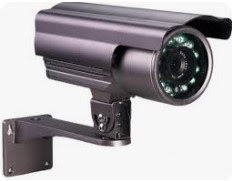Creating a Local Area Network (LAN) for CCTV devices involves setting up a network infrastructure that allows the cameras to communicate with a central recording or monitoring system. Here's a general outline of the steps involved:
1. Plan your network layout: Determine the locations of your CCTV
cameras and where you'll place your central recording or monitoring system.
This will help you decide on the type and length of cables needed, as well as
any additional equipment such as switches or routers.
2. Choose the right equipment: Select CCTV cameras that support
network connectivity (such as IP cameras) and a central recording or monitoring
system that can handle the number of cameras you plan to install. You'll also
need Ethernet cables, network switches, and possibly a router if you want to
connect the CCTV network to the internet.
3. Install the cameras: Mount the CCTV cameras in their
desired locations and connect them to power sources. If using wired cameras,
run Ethernet cables from each camera to a central location where your network
equipment will be installed. If using wireless cameras, follow the
manufacturer's instructions for connecting them to your network.
4. Set up the central recording or
monitoring system: Install
any necessary software or hardware for recording and monitoring the CCTV
footage. Configure the system to recognize and communicate with the CCTV
cameras on your network.
5. Configure network settings: Assign static IP addresses to each
CCTV camera to ensure they have consistent addresses on the network. Configure
any network switches or routers to enable communication between the cameras and
the central recording or monitoring system.
6. Test the network: Verify that each CCTV camera is
successfully communicating with the central recording or monitoring system.
Check for any connectivity issues or areas with poor network coverage and make
adjustment as needed.
7. Secure the network: Implement security measures such as
strong passwords, encryption, and firewall rules to protect your CCTV network
from unauthorized access or tampering.
8. Regular maintenance: Keep your CCTV network running
smoothly by performing regular maintenance tasks such as updating firmware,
checking for software updates, and monitoring network traffic for any abnormalities.
By following these steps, you can create a robust LAN for your CCTV devices that provides reliable surveillance coverage for your property.

.jpg)






0 Comments